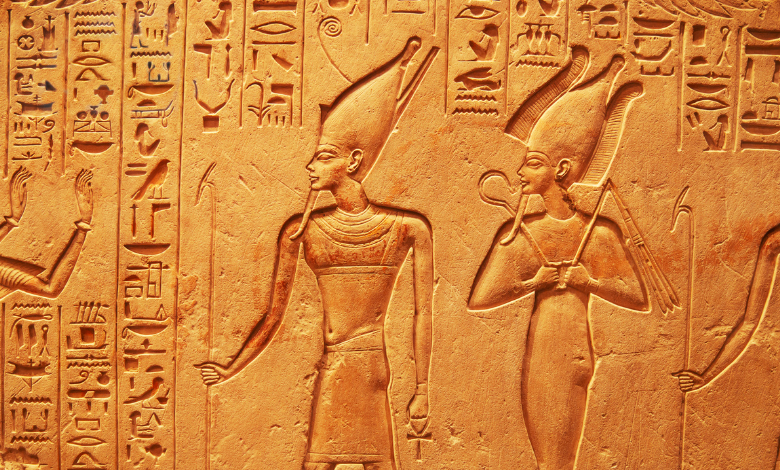Ancient Artz: A Journey Through Time and Creativity

Art has always been a window into the soul of humanity, reflecting our dreams, beliefs, and stories. When we talk about ancient artz, we’re diving into the earliest expressions of human creativity works that shaped cultures and continue to inspire us today. From cave paintings to grand sculptures, ancient art tells us who we were and how we saw the world. In this article, we’ll take an exciting, easy-to-follow journey through the wonders of ancient art, exploring its forms, meanings, and lasting impact in a way that feels like a conversation with a friend.
What Is Ancient Art?
Ancient artz refers to creative works made by early human civilizations, roughly from prehistoric times (around 40,000 BCE) to the fall of the Roman Empire (around 500 CE). These creations include paintings, sculptures, carvings, pottery, jewelry, and architecture. Unlike modern art, which often focuses on individual expression, ancient art was deeply tied to survival, religion, and community. It wasn’t just “pretty” it had purpose, whether to honor gods, mark rituals, or tell stories.
Why does this matter today? Ancient art connects us to our roots. It shows how people thousands of years ago used their hands and hearts to make sense of life, just like we do now. Let’s explore some key types and regions of ancient artz to understand its magic.
The Dawn of Creativity: Prehistoric Art
Imagine being in a dark cave 30,000 years ago, with only a flickering fire for light. That’s where some of the earliest art was born. Prehistoric art, like the cave paintings in Lascaux, France, or Altamira, Spain, is humanity’s first creative spark. These works show animals like bison, horses, and deer, painted with natural pigments like charcoal and ochre.
Why paint in caves? Some believe these images were part of rituals to ensure a successful hunt. Others think they were a way to communicate with spirits. Either way, the skill is stunning lines are bold, and animals seem to leap off the walls. Prehistoric people also carved small figurines, like the Venus of Willendorf, a tiny statue of a woman with exaggerated curves, possibly symbolizing fertility.
These early works remind us that art wasn’t just decoration it was a tool for survival and connection. Even without words, these artists spoke to the future.
Mesopotamian Art: The Cradle of Civilization
Fast forward to around 3500 BCE, and we’re in Mesopotamia, often called the “cradle of civilization.” This region (modern-day Iraq and parts of Syria) gave us cities, writing, and incredible art. Mesopotamian art was all about power and faith. Kings built massive ziggurats stepped temples that reached for the heavens. Sculptures, like the statues of Gudea, a ruler, showed calm strength, while reliefs on palace walls depicted epic battles or lion hunts.
One standout is the Code of Hammurabi stele, a tall stone carved with laws and topped with an image of King Hammurabi receiving wisdom from a god. The details flowing robes, intricate beards show how skilled these artists were. Mesopotamian art wasn’t just for beauty; it reinforced order and divine authority in a bustling world.
Egyptian Art: Timeless Beauty
When you think of ancient art, Egypt probably pops into your mind pyramids, sphinxes, and golden masks. Egyptian art, flourishing from around 3000 BCE to 30 BCE, is iconic for its bold colors, symmetry, and focus on the afterlife. Egyptians believed art could bridge the living and the dead, so they poured their hearts into it.
Take the Great Pyramids of Giza. These massive structures weren’t just tombs they were stairways to the stars for pharaohs. Inside, walls were covered with hieroglyphs and paintings of gods like Osiris and Anubis, guiding souls to eternity. Sculptures, like the bust of Nefertiti, capture a serene, almost otherworldly beauty that still feels alive.
Egyptian art followed strict rules people were shown in profile, with perfect proportions, to symbolize harmony. Yet, within these rules, artists found ways to shine, like in the delicate lotus flowers painted in tombs. This art wasn’t about realism; it was about capturing something eternal.
Greek Art: The Birth of Ideals
Now let’s travel to ancient Greece (around 800 BCE to 146 BCE), where art took a leap toward celebrating the human form. Greek art is famous for its statues of gods, athletes, and heroes, carved with jaw-dropping realism. Think of the Discobolus (Discus Thrower), frozen mid-motion, or the graceful curves of Aphrodite statues.
Greeks loved balance and perfection, which they called “classical ideals.” Their temples, like the Parthenon, were mathematical marvels, with columns that seem to breathe. Pottery was another gem black-figure and red-figure vases told stories of myths, wars, and daily life with elegance.
What’s special about Greek art? It wasn’t just about gods anymore it celebrated humanity’s potential. These works inspired the Renaissance and still shape how we think about beauty today.
Roman Art: Power and Realism
Rome, from around 500 BCE to 500 CE, took Greek ideas and made them bigger, bolder, and more practical. Roman art was about showing off empire and engineering. Think of the Colosseum, a massive arena that screamed Rome’s might, or aqueducts that carried water for miles.
Roman sculptures were less idealized than Greek ones they loved realism, flaws and all. Busts of emperors showed wrinkles and stern gazes, making them feel human. Mosaics were another Roman specialty, with tiny tiles forming vivid scenes of gods, battles, or even daily chores like fishing.
Roman art wasn’t just elite it was everywhere, from grand villas to public baths. It showed a society that valued both power and the little moments of life.
Asian Ancient Art: Harmony and Spirit
Across the world, ancient Asian civilizations were creating their own masterpieces. In India (from around 2500 BCE), the Indus Valley civilization crafted seals with animals and mysterious scripts, hinting at a rich culture. Later, Buddhist art bloomed, with serene statues of the Buddha and intricate stupas like Sanchi, symbolizing enlightenment.
In China, the Shang Dynasty (1600–1046 BCE) produced bronze vessels with swirling patterns, used in rituals to honor ancestors. By the Han Dynasty, silk paintings and jade carvings showed a love for nature and balance, ideas central to Taoism and Confucianism.
These works weren’t loud they whispered wisdom. Asian ancient art invites us to slow down and find harmony, a lesson we could use today.
African Ancient Art: Stories in Stone and Metal
Africa’s ancient art is as diverse as its landscapes. In West Africa, the Nok culture (1000 BCE–300 CE) sculpted terracotta figures with expressive faces, possibly portraits of leaders or ancestors. In Great Zimbabwe (11th–15th centuries CE), stone walls rose without mortar, showcasing engineering genius.
Benin’s bronze plaques, from the 13th century onward, are jaw-dropping kings, warriors, and leopards leap from the metal, telling stories of a powerful kingdom. African art was practical, too masks and sculptures were used in ceremonies to connect with spirits or mark life’s milestones.
This art reminds us that beauty and function can go hand in hand, creating objects that live and breathe with meaning.
Why Ancient Art Still Matters
So, why care about art made thousands of years ago? First, it’s a time machine. A cave painting or a Greek vase lets us glimpse how people lived, loved, and dreamed. Second, it inspires us. Modern artists, architects, and even filmmakers draw from these ancient roots think of the columns in a courthouse or the epic vibe of a superhero movie.
Ancient art also humbles us. These were people without computers or power tools, yet they built pyramids, carved mountains, and painted stories that outlasted empires. It makes you wonder: what will we leave behind?
How Ancient Art Influences Today
You might not realize it, but ancient art is all around us. The sleek lines of modern buildings owe a nod to Greek temples. Fashion designers borrow patterns from Egyptian jewelry. Even video games, like Assassin’s Creed, recreate ancient worlds with stunning detail, bringing these cultures to life for millions.
Museums play a big role, too. Places like the Louvre or the Met let us walk through history, seeing treasures up close. But there’s debate should artifacts stay in their home countries or in global museums? It’s a reminder that ancient art isn’t just beautiful it’s tied to identity and heritage.
Tips for Exploring Ancient Art
Want to dive deeper? Here are some easy ways to connect with ancient art:
- Visit Museums (In-Person or Online): Many, like the British Museum, offer virtual tours. You can see Egyptian mummies or Greek statues from your couch.
- Watch Documentaries: Shows on Netflix or YouTube break down ancient cultures in fun ways.
- Read Myths and Stories: Greek epics or Egyptian tales give context to the art.
- Try Creating: Sketch a cave painting or model a clay figurine it’s a fun way to feel the past.
- Travel (If You Can): Sites like Petra or Machu Picchu are unforgettable.
Final Thoughts: The Heart of Ancient Art
Ancient art isn’t just old stuff in dusty museums it’s a living story of who we are. From a prehistoric handprint on a cave wall to a Roman mosaic sparkling in sunlight, these works show humanity’s endless need to create, worship, and dream. They remind us that, no matter how much time passes, we’re all connected by the urge to leave a mark.
Next time you see a statue or a temple, pause and imagine the hands that made it. What were they trying to say? What would you tell them back? Ancient art isn’t just history it’s a conversation across time, and you’re invited.



